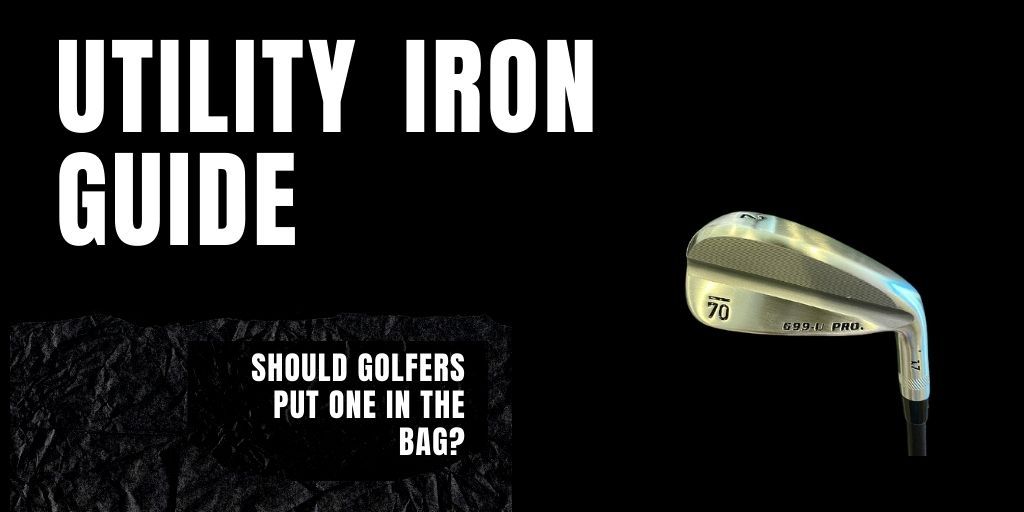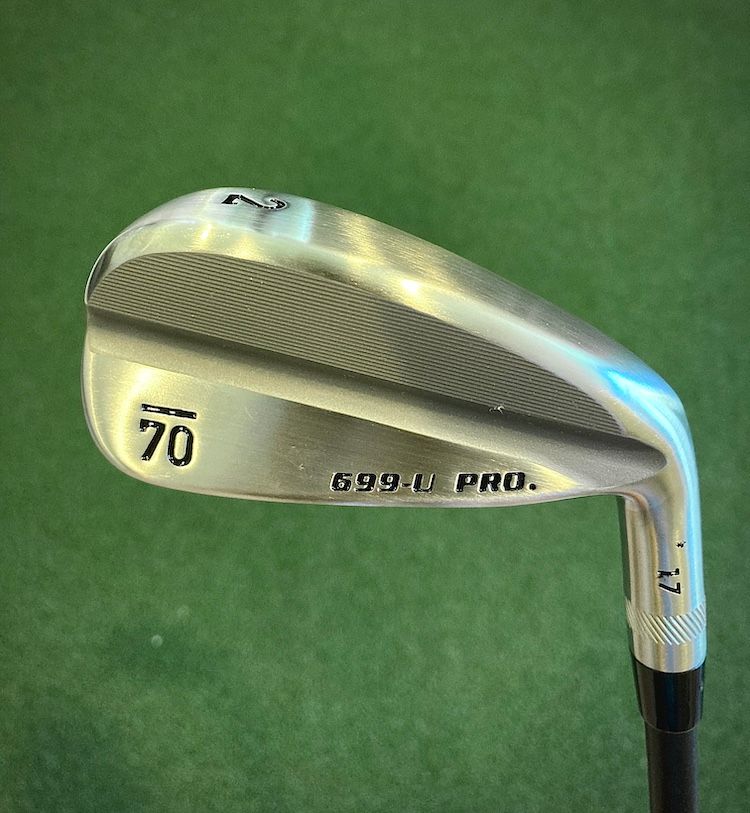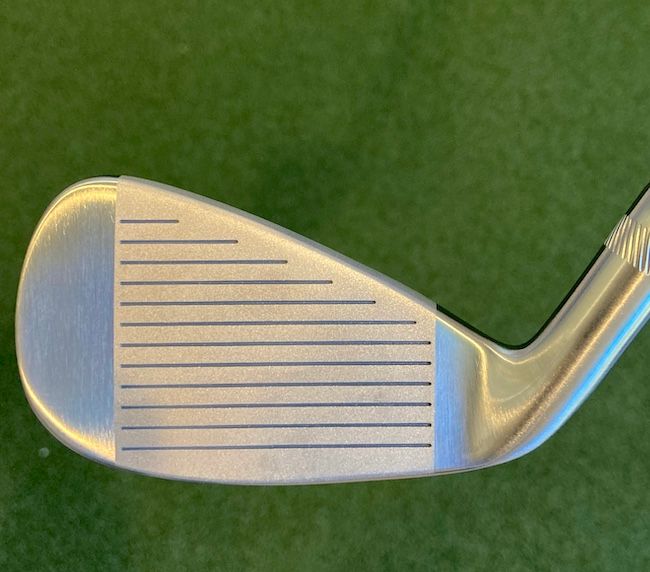
Over the past few years, utility irons (sometimes referred to as driving irons) have become a growing category in the golf equipment industry. Almost every major manufacturer is making them now.
Compared to traditional long irons, a utility iron's design can offer higher ball speeds and launch angles. In theory, it makes them a suitable replacement for those who struggle with hybrids, fairway woods, or long irons.
But does that mean golfers should choose a utility iron over a fairway wood or hybrid? Unfortunately, the answer is not so simple. With any equipment decision you make, you have to match your swing tendencies with the proper club design.
In this guide, I'll help you understand how utility irons perform compared to other clubs and what kinds of players they might be suitable for.
Expert Analysis
I've learned a lot about golf equipment over the last few years from some of the industry's top experts. For this article, I tapped two resources - Mark Crossfield and Woody Lashen.
Mark Crossfield's Take on Utility Irons
Many of you are familiar with Mark Crossfield; he has one of the most popular golf YouTube Channels. I've always admired his data-driven approach and have learned a lot from him over the years.
Mark was kind enough to shoot this video exclusively for Practical Golf readers:
In his test, Mark showed how a utility iron could perform against a hybrid. Despite having similar lofts, you can see how the clubs perform differently due to the difference in center of gravity and clubface design.
Woody Lashen
Woody Lashen is the co-owner of Pete's Golf located in Mineola, NY. They have been recognized as one of the top clubfitters in the industry by almost every media organization. I'm lucky to have him as a resource on all matters related to clubfitting.
I spoke with Woody about his thoughts on utility/driving irons and how they can work with certain golfers.
He told me that the main benefit of a utility iron (versus a traditional long iron) is that they can launch the ball higher due to a lower center of gravity, achieved through a hollow face. Additionally, they'll have a little more MOI (a measure of forgiveness).
On the whole, he finds that less than 10% of the players he fits are good candidates for utility irons, but here are a few conditions that usually lead to him selecting them:
- Utility irons are usually suitable for players who have higher ball speeds.
- If a golfer tends to spin the ball more than normal, a utility iron would be a better fit because it can help control the ball more with less spin.
- Utility irons are a better fit for players who don't match up well with hybrids. Gear effect can be a problem with hybrids for certain players, and the utility iron can reduce those effects.
- Some golfers have "emotional" issues with fairway woods or hybrids, and they might have more confidence with utility irons on approach shots.
While Woody prefers most golfers to choose fairway woods or hybrids as replacements for longer irons, some of these conditions warrant a utility iron choice instead. One recommendation he did make was to have the shaft of your utility iron match the profile of the ones you use on your iron set.
He would like to see more utility irons being offered in higher lofts, such as a five iron replacement. Woody thinks they can be more beneficial to a wider range of golfers than the top of your bag.
Last but not least, he did warn about using a driving iron exclusively off the tee. I'll explore why later in the article.
My Testing
Whenever I do guides like this, I like to give some real-world examples. That way, you can choose equipment as a mixture of diagnosing your tendencies as a ball-striker and matching the right club that will give you the best chance of success on the course.
Please keep in mind that my results will be different than other golfers, which is why I always encourage all of you to get custom fit if possible.
My interest in utility irons was mainly to see how it compared to my fairway wood. Could a utility iron be a better match for me? Also, I wanted to see how the ball flight compared to my 3-iron hybrid and approach shots, which is one of the most reliable clubs in my bag.
So I had my friends at Sub 70 Golf build a club to my specs with their 699 Pro Utility Iron. Their club has all of the features you would expect in a modern utility iron, but their value proposition is lower consumer-direct prices and custom options (this club cost $99 custom built). You can read my review of them here.

Generally speaking, I am a low-launch, low spin player. So when I am evaluating equipment, I need one of two things to happen to have success with a club:
- A higher launch angle: if I hit the ball too low, the ball cannot stay in the air long enough due to lower spin
- More spin: the other way to combat a low launch angle is to add spin so that the ball can "climb" more effectively

Results
Using my launch monitor, I hit a series of shots with my fairway wood, the 699 Utility Pro, and my 3-iron hybrid. My fairway wood's static loft and the utility iron were within a degree of one another, while my hybrid has three degrees more loft. However, you can see that static loft is just a starting point in my results. I'm looking at launch angle, spin rate, ball speed, distance, and peak height.
Here are my results using a tee:
Here are my results without a tee:
Also, I took the Sub 70 699 Pro out on the course for a couple of rounds to see how it performed off the tee and on approach shots.
Tee Shot Analysis
Off the tee, I did find a lot of value in using a driving iron. The days I took it out on the course, it was very windy, and the turf was firm. It was like hitting a "stinger" draw without having to manipulate my swing. The ball launched very low and came off the face with a ton of ball speed, which was helpful on holes where I wanted to use less than driver and was playing into the wind. On several shots, I could roll the ball as far as 250 yards if I hit the fairway.
Additionally, the club was very forgiving and had everything I was looking for in performance (good job, Sub 70).
Looking at my launch monitor results, there were a few tradeoffs though:
- The utility iron had a very low spin rate and low launch angle compared to my fairway wood. Had I been playing in softer conditions without the ball rolling out, or if I missed a fairway, I would be giving up distance.
- My fairway wood has more ball speed and slightly more spin, which created a more optimal launch condition.
Approach Shot Analysis
While I did like the performance of the utility iron off the tee, where I ran into the biggest dilemma was on approach shots.
The iron launched so low with so little spin that it robbed it of distance. Despite my hybrid having more loft and less ball speed, it still carried more than 10 yards farther on average than the utility iron. And if you look at the comparison to my fairway wood, it's a no brainer. I lost almost 30 yards of distance.
This is when my swing tendencies (low launch, low spin) worked against me with the utility iron.
Would I Use a Utility Iron?
For my swing tendencies, the utility iron was a bit of a "one-trick pony." If I used it exclusively as a driving iron, I might put it in the bag only in certain conditions depending on the course layout. Perhaps when the wind was really whipping, and the turf was extremely firm.
However, that would remove the ability to hit longer approach shots on par 5s with a fairway wood. This is exactly why Woody Lashen warned using a club exclusively off the tee. It removes versatility.
For the most part, I don't think it was a good fit for my swing. However, that doesn't mean a different golfer might find it useful as a fairway wood, hybrid, or long iron replacement. You won't know until you test and compare.
Closing Thoughts
As always, when I write articles like these, my main goal is to show you how equipment can work differently for each golfer.
I struggle to hit longer irons on approach shots. That's why I have found so much success with my hybrid. So I don't think a utility iron is appropriate for my game because I can't use them on approach shots. Also, I don't want to lose the ability to hit longer approach shots with my fairway wood, so putting it in the bag as a driving iron doesn't make sense to me in most scenarios.
Despite that, a golfer who has the opposite set of launch conditions (more spin, higher launch) might find more success with a utility iron on approach shots.
Interestingly, companies like Sub 70 are starting to offer utility irons in higher lofts - they just announced a 7-iron replacement. So we could be seeing more of these designs finding their ways into the middle part of a golfer's bag.
Either way, based on my conversations with experts and my own testing, I still view a utility iron as more of a "niche" club - fairway woods and hybrids will work more effectively for the majority of golfers.
Are you playing a utility iron or interested in one? Continue the conversation on this thread in our Practical Golf community.
We care about the protection of your data Read our Privacy Policy